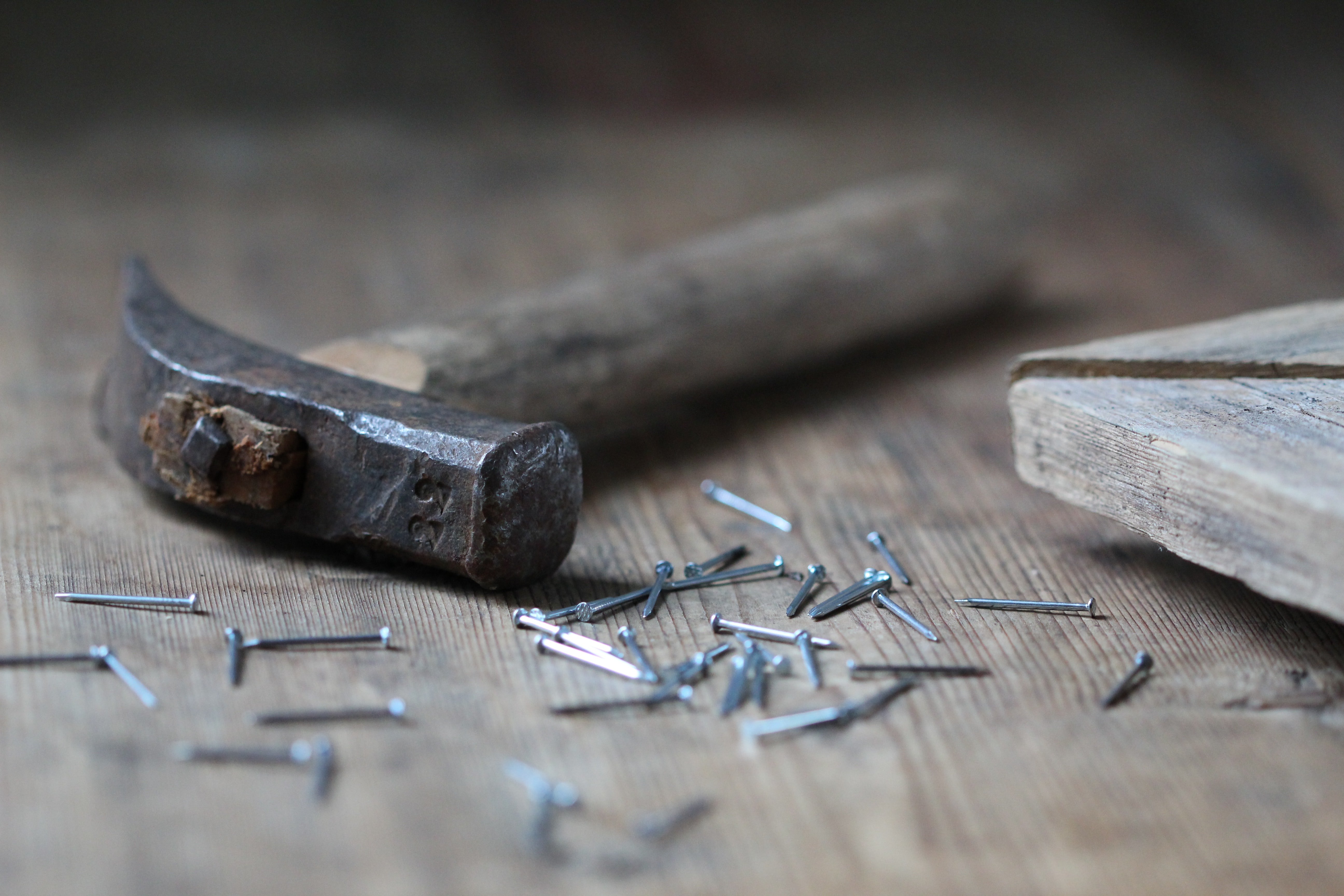 Philippe Barbe
Philippe Barbe

|
Praise for the hammer and the nailby Philippe Barbe
02 Jun 2021
|
If all you have is hammer, everything looks like a nail.
I have stopped counting how many times I have heard that saying in business.
While a case can be made that those with little imagination who master only one tool tend to come up with limited solutions, this saying assumes a lack of imagination first and having only a hammer second. The nail is almost incidental!
The hammer deserves great deference…3.3 million years is a highly respectable age. Where would we be if we had not discovered the hammer?
A stone in the hand and the forearm makes a hammer. But 30,000 years ago, the handle was added to the stone extending the reach of the forearm, as well as its power. Controlled with your wrist it extends your hand to transform your idea into a physical object and giving you the satisfaction of having built something tangible.
Our little saying ignores that the hammer has evolved into many variations… sledgehammer, Warrington hammer, mallet, rock climbing hammer, spiking hammer, stonemason’s hammer, upholstery hammer, welding hammer,and… the authoritative gavel that punctuates (hammers) legislative proceedings as it hits the sounding block, a flat surface, the opposite of a pointed thin nail. If you have no imagination, then everything may look like what your specific hammer is designed for, nail or not!
The diversity of hammers shows that people do have imagination. They just needed to have to do something other than pushing a nail to invent hammers to suit their purpose.
Could the saying be more about the nail than the hammer? If you see nails everywhere, is a hammer the only thing you think about?
The oldest known nails were made in Egypt about 5,500 years ago. Still a respectable age.
The idea took a lot of brain power to conceive and bring into existence. And, its relatively recent (compared to the hammer) invention reminds us that the hammer was invented to smash things, not push nails.
The chemistry of the nail has changed over its history from bronze to now being made of steel with various amounts of carbon depending on how strong it needs to be. Some are over 2 meters long (try hammering one of those), others as short as 5 mm (try to hold one!), some are thick, others are less than 0.5 mm, some are steel, others are brass, copper, or aluminum, some are coated. More than 300 variations are sold in the US.
Try to make a nail by hand, using a forge and… a hammer… and you will realize that this simple object requires considerable skill to make properly. You will gain an appreciation for the ingenuity of the engineers who design machines that can produce a straight round piece of metal, pointed at one end, with one of the many sorts of head at the other at a speed of 700 a minute.
But the beauty of the nail is less in its technology than in the intent that creates its function.
One does not nail thin air. Hammering a nail requires something to drive the nail into, that is, a design. Some artists use nails for decorative purpose exhibiting considerable imagination in creating beautiful patterns. Woodworkers use nails to assemble pieces, embodying the concept of artisan, someone who does both the design and the making.
While a nail serves the purpose of assembling two pieces together, using a nail requires an intent. Why do these pieces need to be together? To achieve what? In that purpose lies the imagination of a designer, and in the motion of the wrist or the forearm hammering the nail, two pieces become one, finding purpose in the way they are assembled.
What can be easier than hammering a nail?
Well, try to hammer a tiny nail, or ask a child to hammer a nail, and you will quickly learn that the hammer is a threat to the hand that holds the nail. Your imagination will immediately try to find a solution to your problem of hammering this nail without the pain of holding the nail in place with your fingers, perhaps with pliers, or through a folded piece of paper.
As the nail is being driven in a board, the line it makes should intersect the plane of the board at a 90-degree angle in all directions. Most people cannot achieve that perfection, resulting in the nail being inclined one way or another. The direction that the nail takes is a reflection of your own ability to, firstly, visualize a line perpendicular to a plane, and secondly, to control the hammer well enough to drive the nail along that line. Hammer long nails and some will bend showing that you have not yet mastered the skill of hammering
Nailing requires you to look at one of three things: the nail, the hammer, or the piece that the nail will be entering. You cannot look at all three of them at once, and yet, you hit the nail with the hammer to push it into the piece. Thus, you are controlling with your hand a hammer that you may not see, in order to push that nail that you are watching through a piece that you only see from the outside. This requires coordination.
But more importantly, in your action of nailing lies the belief that the material will hold the nail…sometimes a wrong belief… and the belief that the nail will hold two things together. In that sense, a nail is a promise of something to be, a lasting existence in the making.
There is no telling what a nail in a box is. So many objects can be made with this nail that this unique nail among many is an entire world which you will incarnate in the specific object that will be nailed.
So, if all what you have is a hammer, nothing may look like a nail, and if something looks like a nail, then its surroundings are future objects whose existence you can decide.
What does the aphorism If all you have is hammer, everything looks like a nail really say then?
Perhaps that the speaker who repeats it without thinking should consider the part about lack of imagination and help to find a solution!